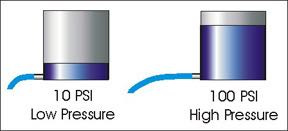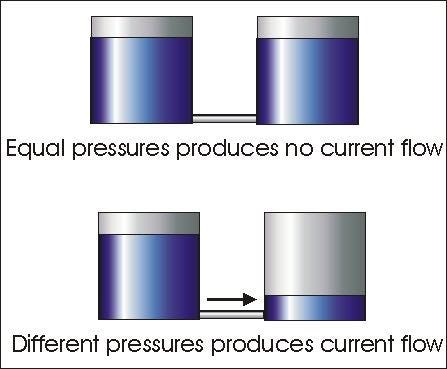What follows is the first in a 12-part series about basic electricity for RV users and how to protect yourself and your family from shocks and possible electrocution.
Pre-Electricity
My first electrical experiments with a dry-cell battery and light bulb out of my Lionel train engine began when I was 4 years old. And I can remember reading every book and magazine available so by the time I was 12 years old I was already designing and building audio gear out of parts I got from old radios and televisions at the county landfill.
It seemed like such a mysterious force that could do most anything from run a fan to shock you if you touched a wire. I wanted to know all about it. So for two years I read every book I could find in the library, every Popular Science magazine I could get my hands on and ran “electrical experiments” in my bedroom. By the time I was 14 years old I knew the basics of DC electricity and how it worked.
RV Safety
While RVs as wired from the factory are inherently safe, they can become silent-but-deadly killers if plugged into an improperly wired extension cord or campsite outlet. This is because RVs are basically a big cage of metal insulated from the ground by rubber tires. It’s up to you, the RVer, to make sure the frame and body of your RV is never electrified due to poor maintenance, bad connections, or reversed polarity in a power plug. This so called Hot-Skin problem is what causes a tingle when you touch the doorknob or metal steps of your RV while standing on the ground.
Just the Basics
There are some novel ways to think about and teach basic electricity to the casual RVer, enough so that you can learn how to test for and avoid shocks or potential electrocution at a campsite. There will be little or no math, no fancy schematic reading and certainly no memorization of formulas. It’s my privilege to teach you basic electricity safety as long as you do one thing for me — let me know if the information is making sense and is helpful to you.
Why Do We Get Shocked? (What is This Volts Thing?)
What’s so hard to understand about electrical shocks in general is that they don’t seem to happen for any obvious reason. For instance, you can watch a pigeon on a power line that’s not being shocked, yet sometimes touching a power tool yourself while standing on wet ground can bring you to your knees. Just why is that?
Well, the first thing to understand about electricity is the concept of Voltage. Think of Voltage as electrical pressure, just like the pressure in a tank of water. Now in a tank of water we measure pressure in something called PSI (pounds per square inch), which will of course increase if we get a deeper tank. So while 10 PSI of water pressure from a short tank might give you a trickle of water when hooked up to a hose, 100 PSI of water pressure from a really tall tank gives you stream that will spray much further.
Water — and electricity — tries to flow to the side of least pressure. You can imagine that if a pipe is connected between two tanks with exactly the same water level and pressure (say, 100 PSI) there will be no flow of water through the hose. It just sits there and does nothing because the system is equalized. However, if you connect one tank with 100 PSI of water pressure to another tank with 10 PSI of water pressure, water will flow from the high tank to the low tank. We measure this water flow in gallons per minute.
Under Pressure
The same thing happens with electricity. You’ve often heard of “completing an electrical circuit,” but think of it as different electrical pressures. Getting back to the pigeon on the power line, if both of the bird”s feet are on the same wire, they’re at exactly the same electrical pressure. Because they’re at the same pressure, there’s no electrical current flowing through the bird. If, however, the pigeon is unlucky enough to touch one foot on a power line and a wing to the grounded metal power pole, then his one foot will be at 1,000 volts (think PSI of water pressure) and his wing at 0 volts (think an empty tank). This will cause a lot of current to flow through the bird, which we’ll measure in Amperes. And indeed 1,000 Volts across a pigeon can cause a bird explosion.
Now, consider your RV. Sometimes you may feel a shock when you touch your hand on the doorknob, and sometimes not. What’s happening is that there’s an electrical voltage (think pressure) on the body of the RV, which is waiting for some different electrical voltage level to head towards. If your entire body is inside the RV, then like the pigeon every part of you is at exactly the same voltage. And like the pigeon, there’s no current flow and you feel no shock. However, if one of your feet is on the ground at essentially zero volts and your hand is on the door of your RV that is at 100 volts, you become the pipe and the different electrical pressure (Volts) will push current (Amps) through your hand, arm, chest cavity, torso, leg and foot. If your foot is on dry ground there might be so little flow that you might not even feel it. But stand on the damp ground with a wet shoe, and you’ve made a zero voltage connection to the ground with your foot and a lot of current will flow through your body.
Watch the Heart
The dangerous part is when this electrical flow goes through your chest cavity since right in the middle of you is your heart, and hearts don’t like to be shocked. That’s because the beat of your heart is controlled by electricity, which comes from your own internal pacemaker. And just like a clock radio can be scrambled by a nearby lighting strike, even a small amount of electrical current passing through your heart can cause it to start skipping beats and cause a heart attack. Just how little? Glad you asked.
I’m sure by now you’ve seen the 20-Amp marking on a circuit breaker. That means it can supply 20 Amps (Amperes) of current flow when asked to do so. Again, you can think of it as gallons per minute of flow, and Amps are indeed a count of electrons per second flowing through a wire (think pipe). Much more on that later, but it takes less than five milliamps of current to cause your heart to go into fibrillation mode. That’s just 5/1000 of an Amp or 0.005 Amps of alternating current to cause what’s essentially a heart attack. It takes just 30 Volts of Alternating Current (AC) to stop your heart if your hands and feet are wet. On the strange but true side of the coin, while Alternating Current is what causes your heart to go into fibrillation and stop pumping blood, the rescue crew will use Direct Current (DC) of several hundred Volts to reboot your heart and get it beating regularly again. That’s what they’re dumping through the paddles on your chest — Direct Current from big capacitors like you see charging on the TV dramas. “Clear!”
Stay Safe
The first rule of staying safe from electrocution is to keep your heart out of the current flow. You can see that getting shocked from hand to hand or hand to foot is about as bad as it can get. That means if you’re plugging in your RV plug to a campsite receptacle with one hand, the last thing you want to do is hold onto the metal box with your opposite hand or be kneeling on the wet ground. If you have two points of contact and something goes wrong (like you touch a bare wire), the current will flow to your opposite hand or feet, passing through your heart in the process. So always turn off the circuit breaker when plugging or unplugging your campsite power. Not doing so is to invite death by electrocution, and nobody wants that.
Quick Tips
•Use only one hand to plug or unplug any power cables
•Turn off breakers in the pedestal before plugging or unplugging campsite power
•Never stand or kneel on wet ground while making electrical hookups
•If you feel a shock from the doorknob of your RV, do not get into your RV. Shut off the pedestal circuit breaker immediately and alert the campsite manager.
Part 2 of this series will cover how to measure voltage at the campsite pedestal before plugging in.
Stay tuned and stay safe. - Mike








Great job explaining what can be confusing.
I also assembled Heathkit projects along with Knight kit. Did a shortwave radio- tube type- from Knight kit and helped my dad build a Thomas electric organ from Heathkit. In my early twenties I helped my dad and brother erect a wind power system on our remote farm.
Thanks Mike!